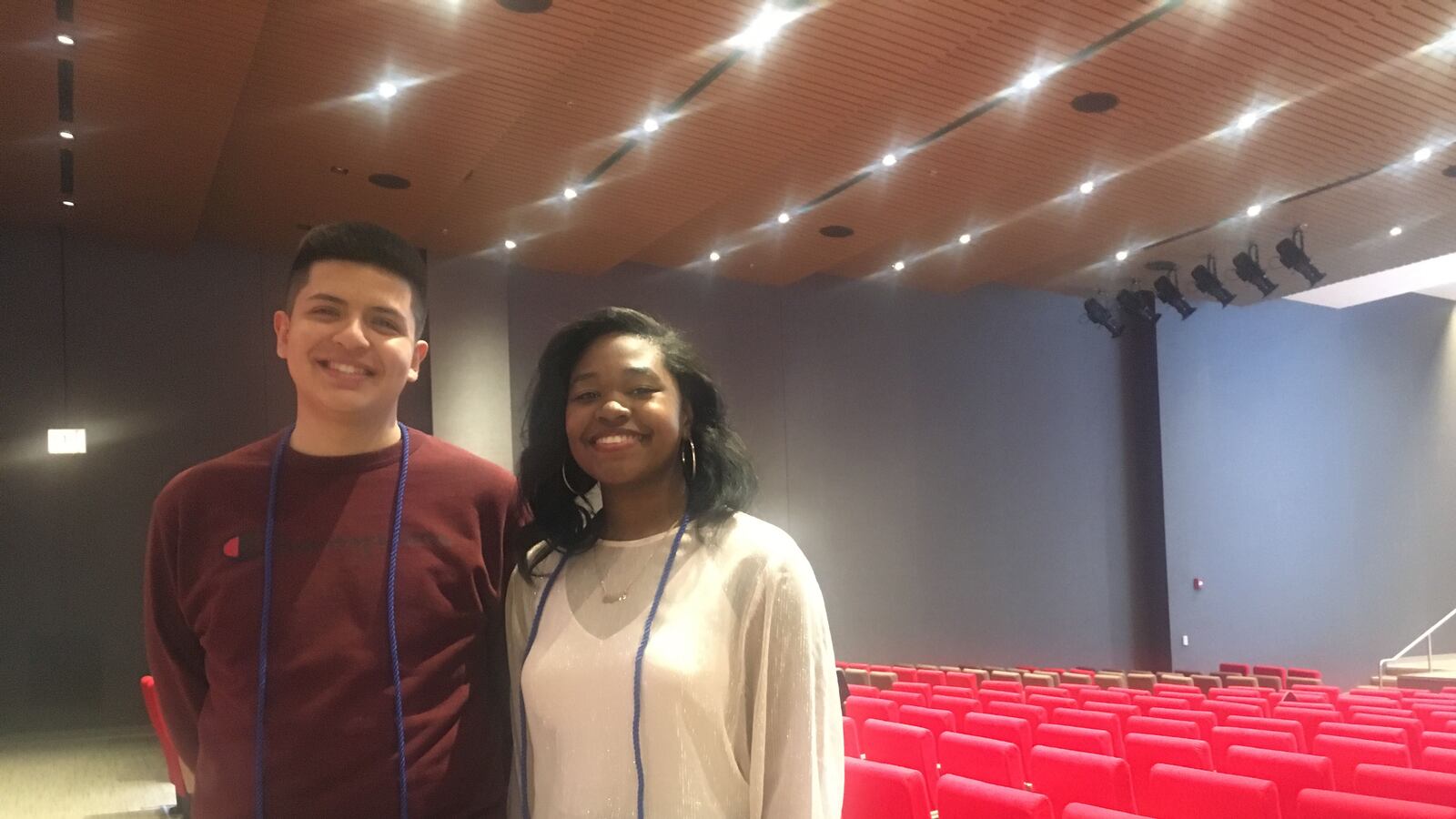Alan Quintana’s last year of high school at Sarah E. Goode STEM Academy looked a lot more like the second year of college, as he finished an associate degree in web development at Daley College.
“It was really rough at times,” he said, as he juggled both high school requirements and the tech classes at Daley. It taught him to manage time, said Quintana, who was among scores of high school students who participated Tuesday in a ceremony at Malcolm X College honoring college enrollees and attended by outgoing Mayor Rahm Emanuel and city colleges Chancellor Juan Salgado.
“Now I have my associates. It feels really good,” Quintana said.
About 400 students from 53 Chicago high schools this spring will have earned more than a semester’s worth of college credits. They’ve benefited from a dual-credit program that Chicago officials hope will cut the cost of higher education and also help more students complete college. Quintana was one of 13 students who will have earned an associate degree by the time they graduate high school.
Chicago’s program offers the opportunity to earn free college credits at any of the city’s seven community colleges, along with subsidized home-to-school transportation.
The program has grown from 300 students who earned at least one college credit in 2011, when Emanuel took office, to more than 3,750 students this school year — a roughly 12-fold increase.
The number of Chicago students who enroll in college, both during and after high school, has steadily risen. But graduating from college has been a challenge. In 2016, just 18 percent of Chicago ninth-graders were projected to attain a bachelor’s degree within six years of high school graduation, and four-year college graduation rates have remained mostly stagnant since 2009, according to a 2017 report by the University of Chicago Consortium on School Research.
Money is a key part of that difficulty. University has become increasingly expensive, with students in Chicago collectively carrying $4.8 billion in student loan debt, according to the consumer credit agency Experian. Staggering figures like those contribute to the push for dual-credit courses.
Supporters hope that by offering free college courses through local community colleges as an alternative to the traditional U.S. higher-education timeline, more students will complete college. What’s called dual enrollment provides a major boost to rates of college enrollment, college and high school graduation, and even students’ high school academic performance, according to a review by federal education officials.
It’s also a way for some high schools to make themselves more appealing to students amid their own struggle for enrollment. Uplift Community High School’s Principal Tyrese Graham announced in March a partnership with Houghton Mifflin Harcourt and Truman College.
Incoming mayor Lori Lightfoot has promised to push for more vocational education for high school students, and a districtwide equity council will tackle college enrollment, among its mandates.
Quintana doesn’t plan to continue studying web development. His classmate, Cheyenne Henry, who earned an associate degree in computer science, also isn’t committing herself to stay in that field.
Instead, they’ll both start at the University of Illinois Chicago. But they still consider the time they spent valuable.
“Even just being at Daley, talking to people, listening to people talk about what they liked, it helped me make a decision,” said Henry, who plans to study psychology.

